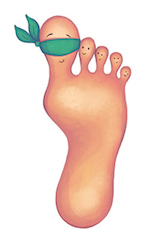
Fam Pract Manag. 2016;23(2):34
Improve huddles with whiteboards
Our residency clinic uses huddles twice a day to discuss staffing assignments, make announcements, and talk about ways to improve patient care. We recently added whiteboards to the huddles to display data that we track over time, helping us identify and solve problems in our process. This allows everyone to help achieve clinic goals. Here are the top three uses:
Tracking on-time starts. We had a problem with starting clinic late and began tracking it in two ways. First, we posted a calendar and drew a line graph on the whiteboard to track whether we started on time (defined as patients being in a room with a medical assistant within five minutes of their appointment time). Second, we used a bar chart to track why we didn't start on time, such as patients or staff arriving late, doors not opening on time, or the front desk getting swamped. On-time starts have improved as we have learned where to focus our efforts.
Tracking referrals. Clinic staff manage our referrals task list, and the volume can be unpredictable. Each day, we review the task list on the whiteboard, noting two things: 1) the overall number of tasks and 2) the oldest referral. We can then decide how to allocate staff time to efficiently complete the tasks.
Tracking safety. We wanted to emphasize the importance of patient safety and how it ties in to our facility's “zero harm” initiative. We elevated safety issues to a daily discussion point in the huddles, listing them on the whiteboard and discussing the processes that caused them.
Other topics addressed with the whiteboard include supplies (we keep a minimal amount of stock to limit waste), patient satisfaction data, and general ideas.
Compare job options using a simple tool
I have taught practice management to family medicine residents for 25 years, and nothing grabs their attention as much as looking for a future practice.
When I coach residents about choosing a practice, I use a simple tool that helps them evaluate their options. Practicing physicians who are leaving a practice can also use this tool to evaluate other opportunities.
The “Practice opportunity comparison” tool available below considers such things as staff experience, office setting, physician personality, and community lifestyle, all of which may affect a physician’s personal and professional satisfaction far more than salary. The tool is not meant to be all-inclusive; items can be added to meet particular needs and situations.
PRACTICE OPPORTUNITY COMPARISON
Despite a physician's best efforts to pick the right practice the first time, changes in reimbursement, payer issues, regulation, practice models, board governance, and even his or her personal life may require a change in practice. Physicians who do their homework have a greater chance for long-term success.
Diabetic foot exams and PQRS

